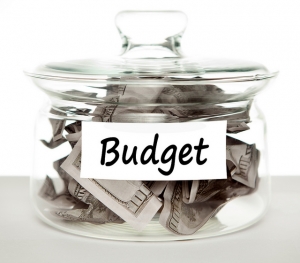
In somewhat turbulent economic times, it’s interesting to note that spending by public officials at the state levels of government is on the increase for 2016. That reverses a trend that dates back to 2008.

Photo by Tax Credits is licensed under CC BY 2.0
Since 2011, state spending, throughout the country, has held steady at about $1.5 trillion per year. However, as the fiscal year for most states nears its end, budget planners are not as optimistic about the coming year and most are proceeding very cautiously. Many states experienced aggressive revenue growth in 2015, but oil and gas prices will negatively impact some in 2016.
Texas, the epicenter of the U.S. oil industry, saw tax collections for the first four months in 2016 down by 49 percent over the same period in 2015. North Dakota, the nation’s second-ranked oil producer, has also suffered from oil prices declining by more than half over the past year. The number of active drill rigs in the state dropped from 187 two years ago to 28 this year.
Of the eight states that anticipate lower revenue this year, six are significantly dependent on energy. The remaining two are Rhode Island and Illinois.
Revenue issues are not new for Illinois. In fact, budgetary concerns caused a stalemate for a year and a half until lawmakers passed a budget this month that keeps the state operating for another six months. However, the temporary fix failed to address the state’s $8 billion revenue backlog. Rhode Island has been struggling with revenue issues for the last several years but the state’s revenue issues are not related to oil revenues.
Governors and legislators in states experiencing revenue declines are dealing with it in various ways. Gov. Bill Walker of Alaska has proposed a revenue revamp, including restructuring the state’s $47 billion Permanent fund. His 2017 budget also includes a personal income tax, the state’s first in more than 30 years.
In Louisiana, Gov. John Bel Edwards included across-the-board cuts and promoted long-term solutions to address the current budget gap, such as increasing the tobacco tax and lowering personal income tax deductions.
Because it is not possible to predict when another recession may occur, state leaders and lawmakers are exceedingly cautious midway through the year. Some are looking closely at non-producing state assets and soliciting ideas from private-sector partners about how to make them revenue generators. Others are embracing alternative funding options as a way to meet critical water, power and transportation needs.
It is becoming almost common for state entities to hear from state leaders that they should look for ways to generate part or more of the revenue they require. Every state is looking for ways to become more efficient and for some that involves consolidations, technology enhancements and more innovation from executive teams.
Whatever route is taken, there will be, without doubt, thousands of opportunities for innovation, visionary thinking and collaboration. The country’s situation presents a perfect scenario for private-sector firms to suggest cost-cutting ideas, new technology for efficiencies, alternative funding options and revenue-producing suggestions to public officials. Years from now, history will detail what worked best and how state leaders successfully navigated the unpredictable surges and declines of government revenues.
SPI’s team of public-private partnership consultants can give your company a competitive advantage on procurement opportunities. Contact them today.
